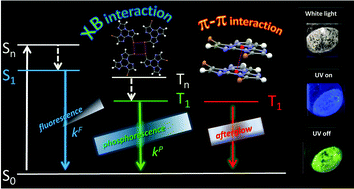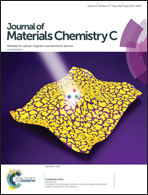Metal free room temperature phosphorescence from molecular self-interactions in the solid state
Abstract
Purely organic materials showing solid state room temperature phosphorescence (RTP) are attracting an ever growing interest due to their low toxicity, cost and environmental load compared to their organometallic counterparts. In addition, specific features potentially associated with organic phosphorescent materials, such as long afterglow lifetimes, have opened the way to new possible applications including low-cost anti-counterfeiting technologies, temperature monitoring, sensing and bio-imaging. RTP of organic molecules is reviewed here for the cases where intermolecular interactions among molecules of one type only are involved. In particular, the selection is focused on papers dealing with self-interactions of halogen bonding (XB) and π–π type. After recalling a few basic concepts underlying emission phenomena, a selection of examples where XB and π–π interactions are involved, separately or in conjunction, is reported. In the cases where different interpretations have been given for the same class of molecules, we have gathered and discussed the different suggested mechanisms.

- This article is part of the themed collections: 20th Anniversary of Aggregation-Induced Emission and Recent Review Articles


 Please wait while we load your content...
Please wait while we load your content...